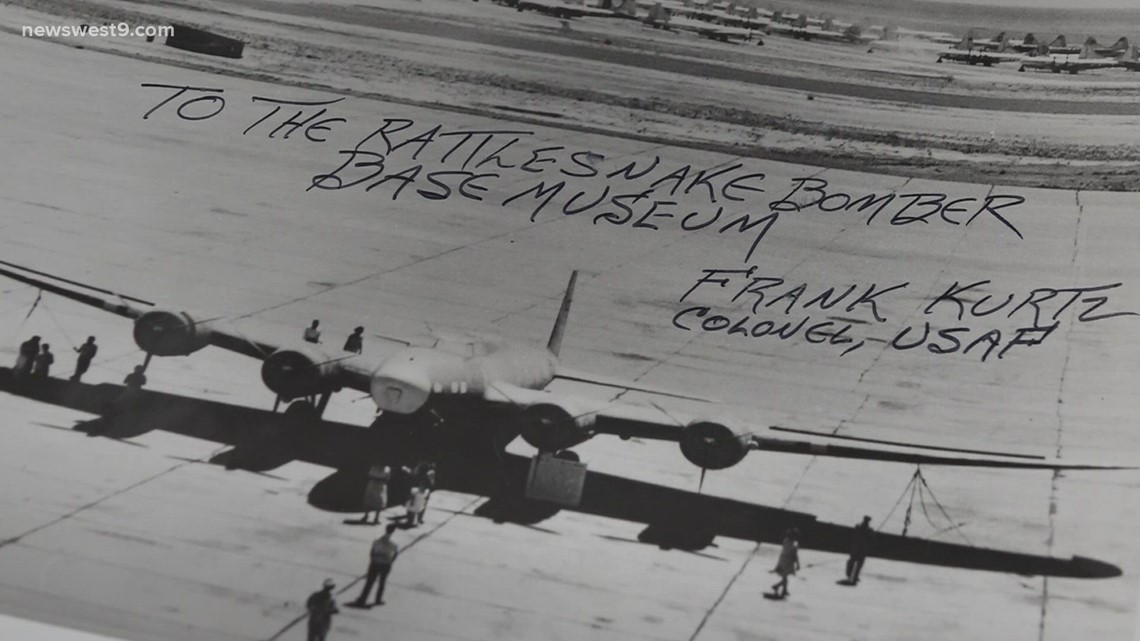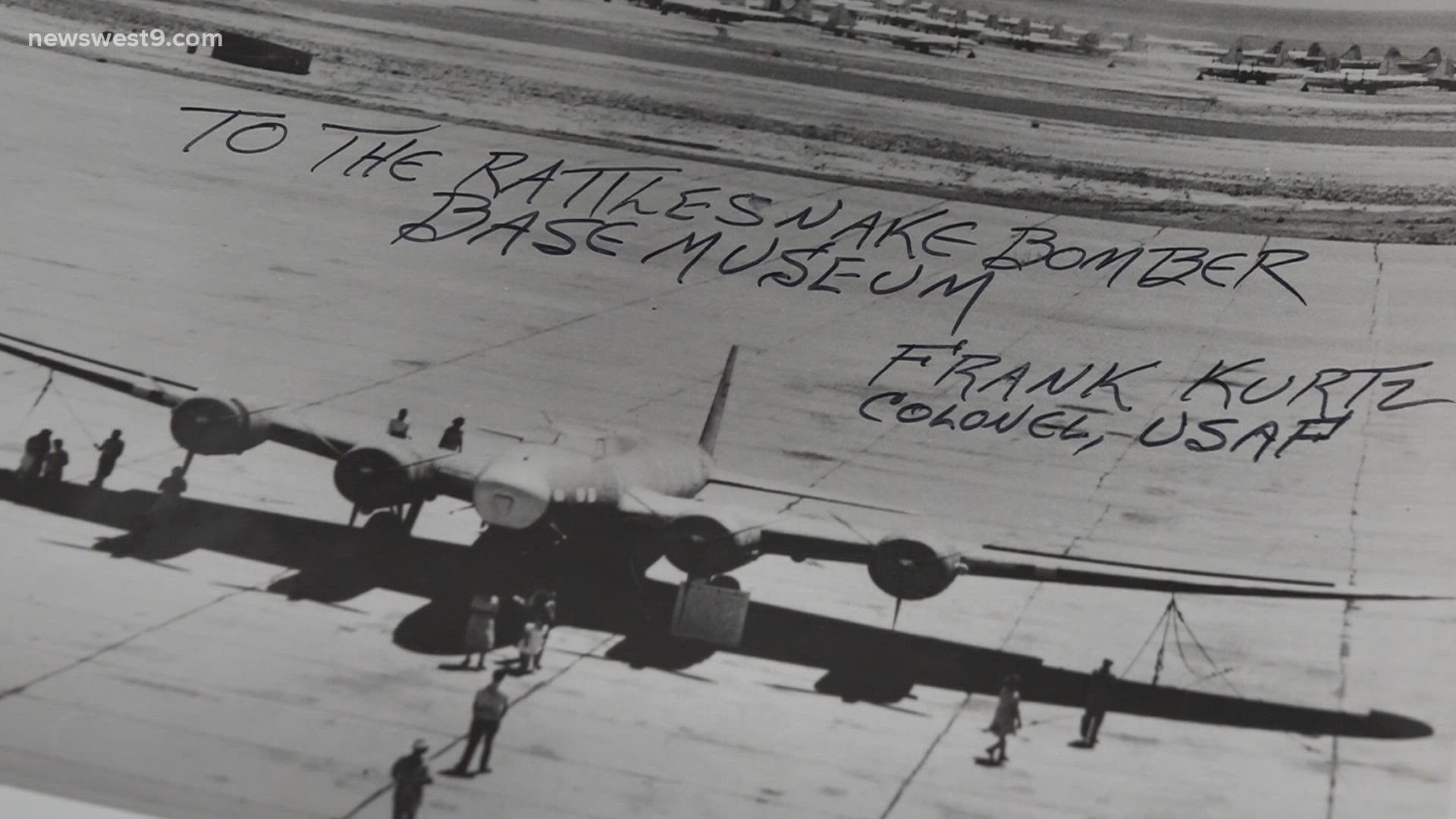PYOTE, Texas — Along Interstate 20 just west of Pyote sits a rather unique looking rest stop. It marks Pyote's place in history.
Ellen Friar, part of the Ward County Historical Commission, tells me the old base was not only important. It was the biggest.
“Rattlesnake Bomber Base was the largest bomber training base during World War ll," Friar said. "Which is amazing because you drive by now and there’s a little two walls and a hangar left.”
The story goes that after Pearl Harbor in 1941, the citizens of Pyote were swept up in the call to war. A Ward County commissioner went to New Mexico to the Army Corps of Engineers and pitched Pyote’s 360 day a year flying weather and expansive flatness.
“And they didn’t really give him an answer, but several months later in the summer of 42, they started to notice a lot of things getting unloaded off the rail in Pyote, a lot of construction materials, started clearing some land… and so they’re like, hey, something’s happening,” Friar said.
And something was happening. The Army leased a large chunk of land from the University of Texas, and built Pyote Army Air Base, which became affectionately known as Rattlesnake Bomber Base thanks to, well, all of the rattlesnakes out there.
Initially, the base was used to train airmen on B-17 bombers, the Allies main bomber in Europe. But war necessitates innovation, and just two years later, the B-29 arrived, and this would help the Allies in the Pacific theatre.


“And so they began training crews for the B-29s here," Friar said. "The B-29s went over to the Pacific because they could fly longer, and in fact they were some of the planes that could hopefully make it to mainland Japan.”
The B-29s proved successful, and in fact were capable of making it to mainland Japan. The B-29s were the aircraft that dropped the atomic bombs on Japan in 1945, abruptly bringing the war to an end.
“When the war came to an end, the government had hundreds of planes on hand and, while I guess a few people knew about the atomic bomb, most people didn’t, so you’re still turning in orders," Friar said. "So there are lots of planes at factories the government has to pay for. There’s nowhere for them to go. So at that point, Pyote became a storage facility.”
Many planes found their way to Pyote over the years, but B-29s were by far the most common, some of which were brand new off the assembly line. The best planes were wrapped up tight and weatherized for future use, but the majority of them were cut apart and melted down to be sold to factories back east.
Even the Enola Gay… the plane that dropped the first atomic bomb on Japan… found her way to Pyote for a few brief years, as the West Texas desert helped to preserve the plane.
“In February of 1952, the Swoose and the Enola Gay were flown here to be stored here,” Friar said.
After the storage-era ended at Pyote Air Base, the base housed a radar site, helping to keep watch over the West Texas skies during the Cold War. But that too came to a quick end.
“Early to mid-60s, about 64 I believe, the base closed again and it closed for the final time," Friar said. "The land had always been leased from University of Texas land, so at that point, the lands were returned back to University of Texas.”
At its peak in 1944, it housed more than 6,500 people, more than 50 times the current population of Pyote.
Interstate 20 was eventually paved through the northern portion of the base, separating the main entrance from the rest of the compound. And though the majority of the base is off-limits to the public, that main entrance is now a historic marker.
It’s surreal to think the one-time largest bomber training base in the United States is now nothing more than a concrete frame and a severed main entrance. Standing at the gate… with its 1940s iconographic lettering and painted wings… the roar of traffic along the interstate is almost deafening. Yet you get the feeling that something important happened here, some 80 years ago. And in the West Texas air, if you listen closely, you can still hear the unmistakable hum of the B-29’s that called Pyote home.

